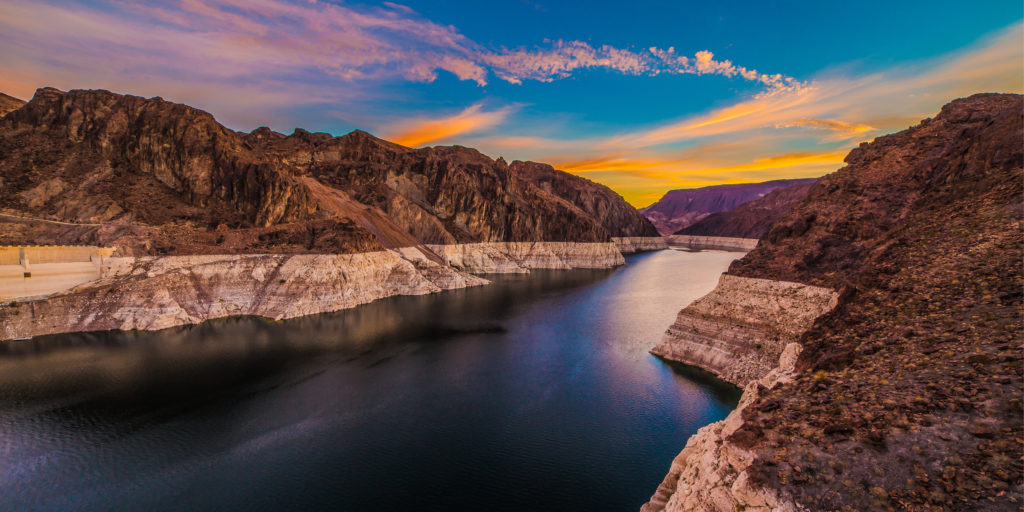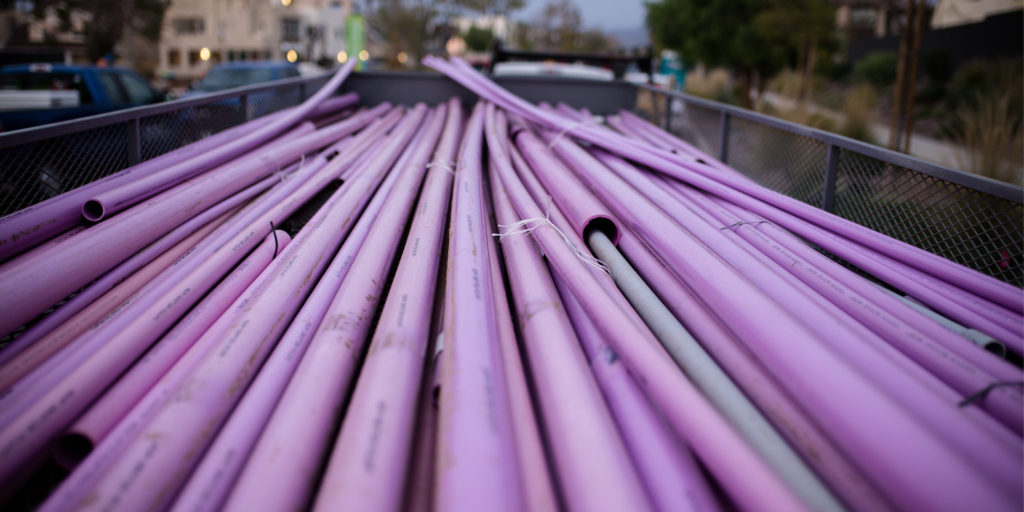The Color Purple

California is in the midst of the driest January, February and March on record. The images of Lake Mead and Lake Powell at historic lows, two of the largest reservoirs in America that are parts of a system that supplies water and power to Arizona, Nevada, California and Baja California, are shocking. Already, several towns in Arizona have had their water supply cut off. At the same time, a nearly 19% increase in California water use in March (compared to the previous two years) has raised alarms. The dry spell had residents resorting to more water use for their landscapes and lawns.
Beginning in June, six million Southern California residents who draw their water from the Metropolitan Water District will face unprecedented water restrictions for their landscape at only one day per week, and the four million Los Angeles Department of Water and Power customers at two days per week. Seeing the map of affected communities is eye opening. Unaffected, and one of the most interesting observations is that most of Orange County and especially Irvine have been insulated from these measures.
Source: www.mwdh2o.com
When Irvine was first conceived in the early 1960s, the Irvine Company and planner William Pereira devised an entirely new approach to city crafting. Among the many innovations was a determination that wastewater would be recycled – recognizing even then, water was just too precious to use only once. In 1967, the Irvine Ranch Water District (IRWD) began building the infrastructure to supply recycled water. As they developed their concept, to supply water to agricultural operations, parks, golf courses, and greenbelts, they had to develop a parallel piping system to distinguish recycled water from freshwater.
In the 1980s, IRWD decided to select a bold pipe color that would be eye catching so no one would make a mistake. They chose purple – Pantone 240-241 is now the color recognized internationally for recycled water pipes, and as it turns out, the hue is discernable to the 1:12 men who are colorblind.

In 1991, Jamboree Center became the first commercial project where restrooms were designed to supply recycled water for flushing. Today, the IRWD provides about 25% of the district’s demand from recycled water. In addition to all the green spaces in Irvine, it provides recycled cooling water to about 130 local office buildings including the landmark 200 and 400 Irvine Spectrum Towers. The IRWD operates one of the most robust recycling systems in the country that includes three reservoirs and hundreds of miles of purple pipe.
The Orange County Sanitation District serves 2.6 million people in central and northwest Orange County and operates the third largest wastewater treatment plant west of the Mississippi River. OCSD recycles water and injects it into the ground, creating the world’s largest water purification plant for groundwater recharge. While other recycling plants exist in the state, most outflow to the ocean.
Tours are periodically available from IRWD and OCSD – I have visited the IRWD plant south of Michelson near UCI. It is truly fascinating, well worth the time, and attracts water professionals from all over the world inspired by the color purple.





Leave a Reply